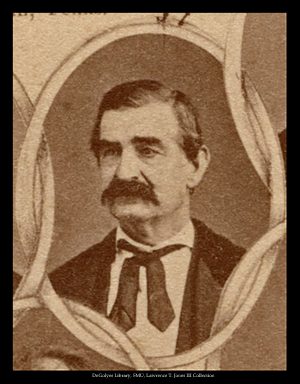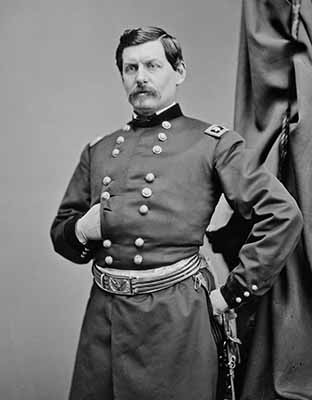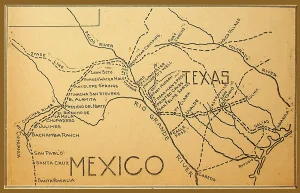A milestone in Texas history was statehood in December 1845. In 1846, Texas was the staging ground for the Mexican American War. General Zachary Taylor was stationed in Corpus Christi, and soldiers were being recruited from all over Texas. Some sources say that troops may have camped at Mesquite Landing — and it was certainly within their path, but there is no official record of such.

In 1848, Dr. Alfred Sturgis Thurmond purchased the Joshua Davis lands (5-¼ leagues) and established a large plantation (also cited as a ranch) with slaves. He would have been able to control shipping at Mesquite Landing. Thurmond had come to Texas at the time of the Revolution and thereafter served the Republic in many capacities — soldier, lawman, and legislator.
Thurmond was a survivor of the ill-fated Mier Expedition. When released, he came back to Victoria and married Julia McGrew, sister of Dr. William Patrick Henry McGrew. He may have been the first to establish a ferry at the site of Mesquite Landing. Thurmond went on to be in the State Legislature after the Civil War. He lost a bid for reelection in 1873 and decided to retire to Mexico. He sailed for Tuxpan in January 1876, but his ship was lost at sea.
The Chihuahua Road
By 1848, teams of mules and oxen pulled large cargo wagons from the port of Indianola to Chihuahua, Mexico (and on to California). According to Brownson Malsch in Indianola: The Mother of Western Texas, “Departing from the wharf area at Indianola after loading, the wagons headed due west to Green Lake, then past McGrew’s [ferry at Mesquite Landing] and on to Victoria, where they crossed the Guadalupe River.” Other sources mention that wagons headed for Chihuahua also crossed the Guadalupe upriver at Victoria.
Families of great wealth bought lands along the San Antonio and Guadalupe Rivers in the years leading up to the Civil War. They raised stock, grew cotton and other crops. Seabourne Lewis established a large plantation on the San Antonio River at what would come to be known as Lewis’ Bend. A Lewis family historian relates that they brought cotton on wagons to Mesquite Landing to be shipped to New Orleans.
In 1851, Thurmond sold his plantation to Dr. William Patrick Henry McGrew, recently arrived in Refugio County from Copiah, MS. He was likely following his parents and siblings who were in Texas by 1850. McGrew was at various times a medical doctor, a lawyer, a politician, the Mayor of Refugio, and a Methodist minister. He also established a plantation at Mesquite Landing and continued ferry service established by Thurmond. A news article in the Texian Advocate in 1851 mentions a new road that opened in February or that year, going from McGrew’s Ferry around the top of Green Lake to Indianola — and it boasts that the new road does not have the muddy bogs or potholes of the old one!

Young Lt. George B. McClellan of the U.S. Army received orders in 1852 to explore from Paso Cavallo to the San Antonio River. That would most certainly have taken him up the Guadalupe River to Mesquite Landing — or from the San Antonio River past Mesquite Landing and to the bay, depending where he started.
The account of his journey is published under the quote, “Nothing but rascally white people”, which gives pause to wonder what he discovered.
Of course, General George Brinton McClellan would be a Union officer of some fame during the Civil War.

About 1855, the Francis Brichta script grant of about 640 acres right on the confluence and part of the adjoining surveys was purchased or at least occupied by Peletiah Bickford. Bickford journeyed to Texas from Maine in 1836 and was a Texas Ranger for several years. He came to Victoria in 1848 after being released as a prisoner of the ill-fated Santa Fe Expedition (1844).
Bickford was first married to Seabourne Lewis’s daughter. When she died, he married Elizabeth Kinney, a former governess in the home of Dr. Alfred Thurmond. Bickford set up his own ferry immediately at the confluence, just over 2 miles from McGrew’s Ferry at Mesquite Landing.
His descendants own the land today. Pelatiah and his wife are buried in a private cemetery on a bluff overlooking the confluence.
Go to: Civil War

